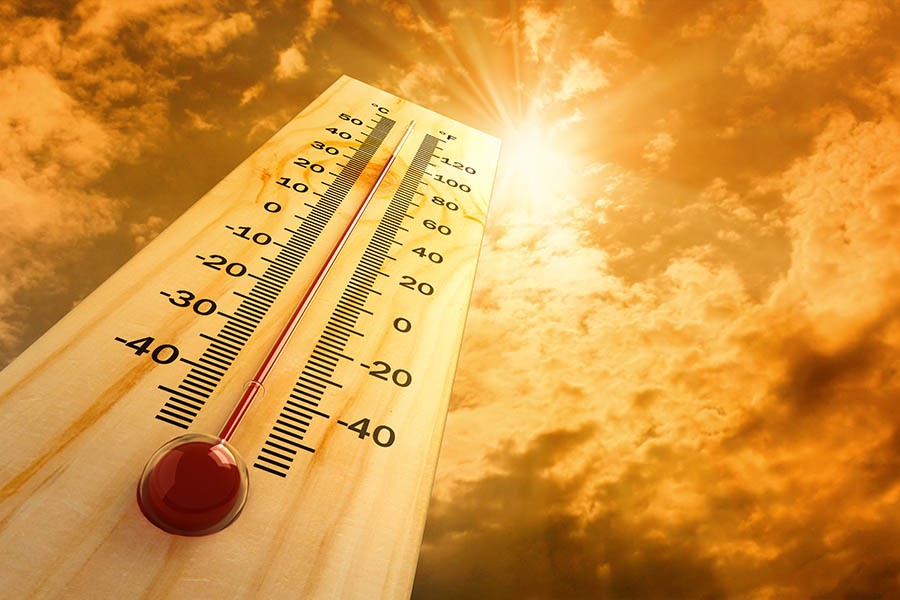This year is set to be the second hottest year on record and one of the three hottest years till date, with many high-impact events, including catastrophic hurricanes and floods, debilitating heat-waves and drought.
Long-term indicators of climate change such as increasing carbon dioxide concentrations, sea-level rise and ocean acidification continue unabated, says the World Meteorological Organisation's provisional statement on the State of the Climate.
A UNB report says Arctic sea ice coverage remains below average and previously stable Antarctic sea ice extent was at or near a record low.
The World Meteorological Organisation's provisional statement on the State of the Climate says the average global temperature from January to September 2017 was approximately 1.1 degree Celsius above the pre-industrial era.
2016 is likely to remain the warmest year on record, with 2017 and 2015 being second and/or third, and 2013-2017 is set to be the warmest five-year period on record.
The WMO statement - which covers January to September - was released on the opening day of the United Nations climate change conference in Bonn.
It includes information submitted by a wide range of UN agencies on human, socioeconomic and environmental impacts as part of a drive to provide a more comprehensive, UN-wide policy brief for decision makers on the interplay between weather, climate and water and the UN global goals.
"The past three years have all been in the top three years in terms of temperature records. This is part of a long-term warming trend," said WMO Secretary-General Petteri Taalas.
"We've witnessed extraordinary weather, including temperatures topping 50 degrees Celsius in Asia, record-breaking hurricanes in rapid succession in the Caribbean and Atlantic reaching as far as Ireland, devastating monsoon flooding affecting many millions of people and a relentless drought in East Africa.
Many of these events - and detailed scientific studies will determine exactly how many - bear the tell-tale sign of climate change caused by increased greenhouse gas concentrations from human activities," he said.
Patricia Espinosa, Executive Secretary of UN Climate Change which is hosting the Bonn conference, said: "These findings underline the rising risks to people, economies and the very fabric of life on Earth if we fail to get on track with the aims and ambitions of the Paris Agreement."
"There is unprecedented and very welcome momentum among governments, but also cities, states, territories, regions, business and civil society. Bonn 2017 needs to be the launch pad towards the next, higher level of ambition by all nations and all sectors of society as we look to de-risk the future and maximise the opportunities from a fresh, forward-looking and sustainable development path," she added.
A review of the Food and Agriculture Organisation (FAO) found that, in developing countries, agriculture (crops, livestock, fisheries, aquaculture and forestry) accounted for 26 per cent of all the damage and loss associated with medium to large-scale storms, floods and drought.
Between 2000 and 2016, the number of vulnerable people exposed to heatwave events has increased by approximately 125 million.
In 2016, 23.5 million people were displaced during weather-related disasters. Consistent with previous years, the majority of these internal displacements were associated with floods or storms and occurred in the Asia-Pacific region.
The latest International Monetary Fund (IMF) World Economic Outlook indicates that adverse consequences are concentrated in countries with relatively hot climates and which are home to close to 60 per cent of current global population.
Many parts of the Indian subcontinent were affected by monsoonal flooding, despite overall seasonal rainfall being near average.
The most serious flooding occurred in mid-August in eastern Nepal, northern Bangladesh and nearby northern India.
Mawsynram (India) received more than 1 400 mm from 9 to 12 August. Rangpur (Bangladesh) received a month's worth of rain (360 mm) on 11-12 August.
More than 1 200 deaths were reported in India, Bangladesh and Nepal, while more than 40 million people were displaced or otherwise affected.
The World Health Organisation indicated that in Bangladesh alone, more than 13 000 cases of waterborne diseases and respiratory infections were reported during three weeks in August, whilst extensive damage was reported to public health facilities in Nepal.


